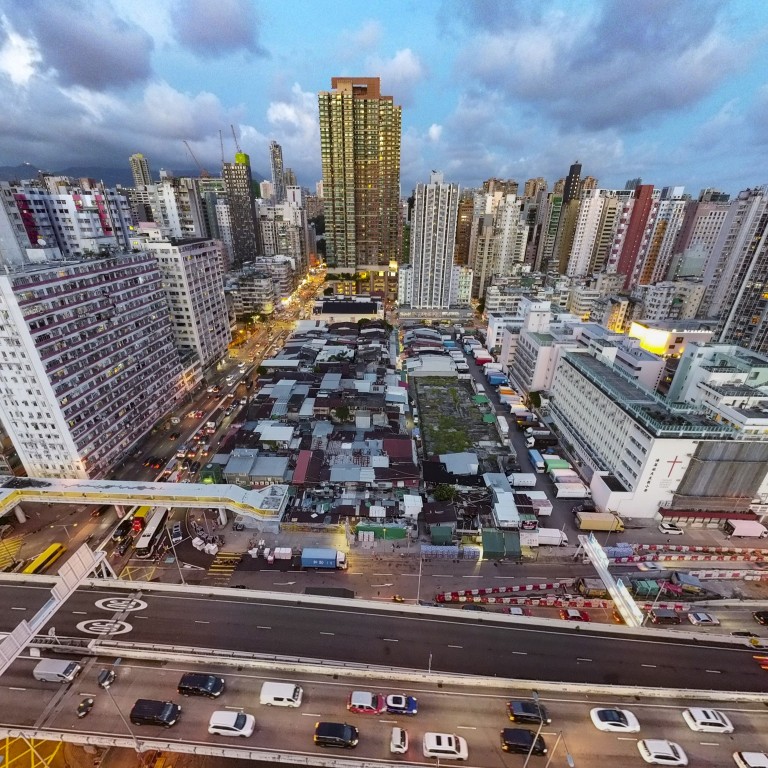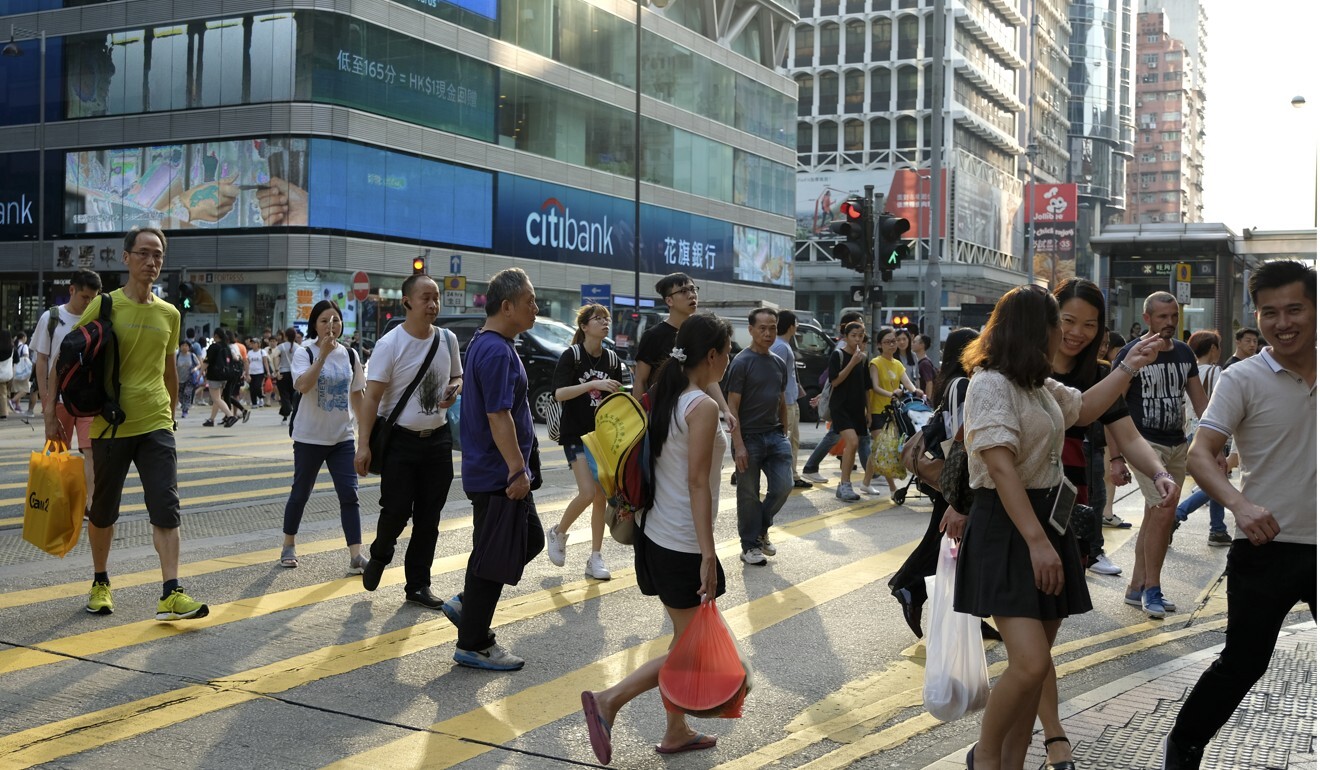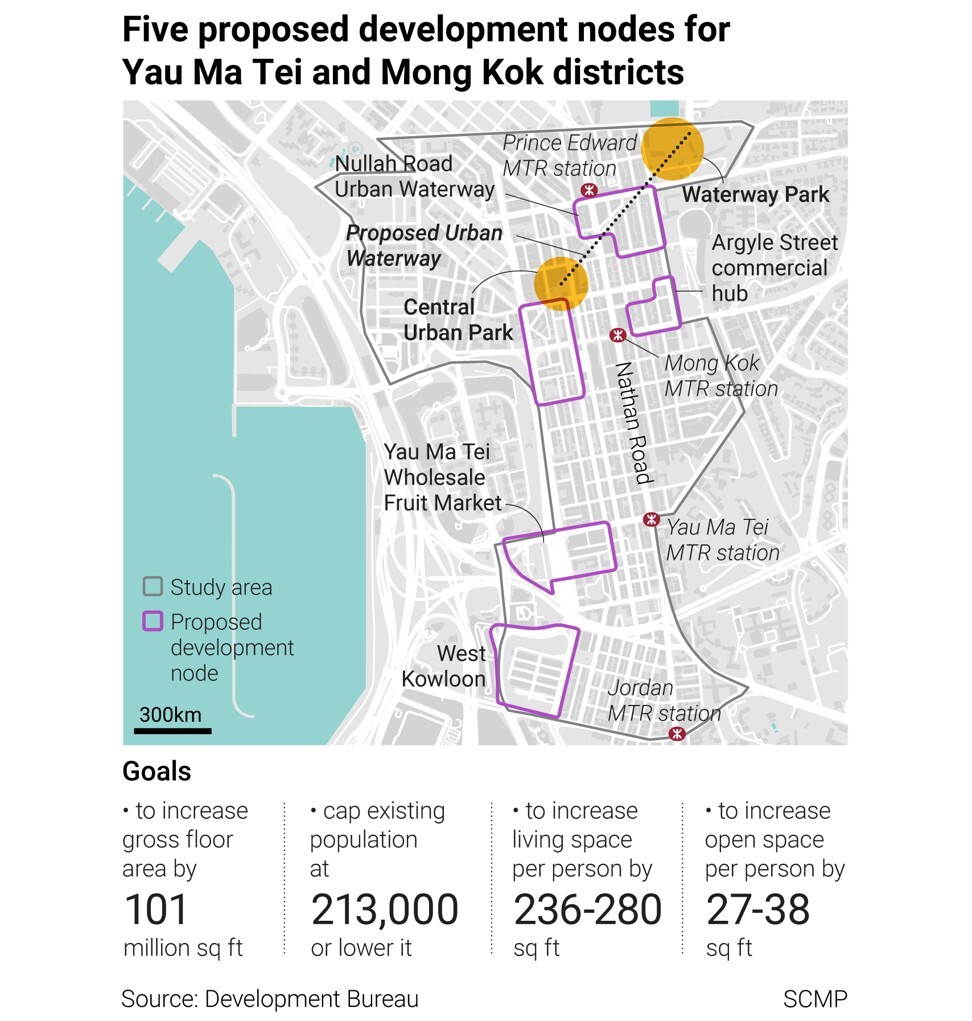
‘Breakthrough’ blueprint for revitalising two old Hong Kong areas hailed by urban planners, but district councillor has his doubts
- After four-year study, Urban Renewal Authority submits paper to legislature laying out blueprint to overhaul parts of Yau Ma Tei and Mong Kok
- URA says approach will energise urban renewal by luring in developers to generate economic benefits for areas
The Urban Renewal Authority (URA) has unveiled a blueprint for redeveloping parts of two old, densely built Hong Kong districts with relaxed planning restrictions, potentially allowing residents to enjoy more living space and open areas while providing room for subsidised housing.
Urban planners hailed the scheme, which the government supports, as “thinking out of the box”, but a district councillor expressed doubts about its scope, saying it was too limited to cover the thousands of old buildings in the neighbourhoods.
After a four-year study, the URA submitted a paper to the Legislative Council on Friday laying out its blueprint to overhaul parts of Yau Ma Tei and Mong Kok. The study covers about 212 hectares (524 acres), comprising 3,350 buildings, of which about 65 per cent are at least 50 years old.
It noted that it could not handle urban renewal alone, and the private sector’s participation was needed. But redevelopment in the area has been slow, with just 53 occupation permits for new buildings issued in the past 20 years.

“With [the] increase in development potential and application of the new planning tools, the proposed urban restructuring … will energise the market in undertaking urban renewal work and bring about economic benefits to the area,” the URA said in the paper.
The scheme did not set a specific target on the number of plots or buildings to be rebuilt, but put forward measures to make redevelopment more financially viable for itself and the private sector.
Cheung Sha Wan tenements set for wrecking ball to provide 2,000 flats
One such proposed planning tool is the transfer of plot ratio – which determines a site’s built-up area – between locations to allow greater development density in prime spots, and more open space in inner streets.
This would make the redevelopment of some 800 buildings in the study area financially feasible, as current planning restrictions bar developers from building new blocks higher than existing densities.
By transferring the plot ratio of a small, unprofitable site to other areas with more economic potential that had used up all their development density, more homes and commercial units in strategic locations could be built.

Another suggestion was to give developers that were willing to provide open space and public passageways bonus gross floor area in their new residential or commercial projects.
The authority will flesh out details of the planning measures later, but did not give a timeline for implementation. It will launch a public consultation after meeting lawmakers next Tuesday.
The URA also said it would identify suitable sites for affordable housing in the form of subsidised “starter homes” for first-time buyers, but actual supply would be subject to resource availability, technical feasibility and government policy directives.
18,000 new homes: HK$100 billion push to help first-time buyers, regenerate city
Ivan Ho Man-yiu, former vice-president of the Hong Kong Institute of Urban Design, said he supported the authority’s “out-of-the-box thinking”, calling it a step in the right direction.
“To openly state these recommendations shows that there has been a breakthrough in the rigid planning rules that have kept our hands tied for the past two decades,” he said.
Under the plan, a development node within walking distance of MTR stations would be set up in each of five proposed renewal opportunity areas in Mong Kok, Tai Kok Tsui and Yau Ma Tei.

The development nodes will be designed with a distinctive theme and are meant to become high-rise landmarks that trigger regeneration of the surrounding area.
One example is the revitalisation of Yau Ma Tei Wholesale Fruit Market into a tourist attraction complemented by a new boutique hotel, open space and an art and cultural area to the south. The existing market will be preserved for fruit retail and tourism uses, while wholesale operations will be relocated to an adjoining street.
Argyle Street, an existing shopping area, will be further developed as a commercial hub.
While neighbourhood sleeps it comes alive: Yau Ma Tei fruit market
Another example is Nullah Road Urban Waterway, which will turn Mong Kok East into a “walkable entertainment and shopping destination” with commercial and residential development built along a new waterway running from Flower Street Path across Prince Edward Road West.
But Ho said the URA might find more success by giving people room to create their own space rather than purposefully planning a neighbourhood by theme.

“Eventually, residents’ lifestyles and needs will automatically be reflected in the neighbourhood in shops and businesses. This will help create unique features in the area,” he said.
Yau Tsim Mong district councillor Derek Chu Kong-wai, however, said he doubted whether any new space was being freed up and expressed concern that nothing was being done directly to systematically repair old buildings, noting that 80 per cent of the blocks would be 70 years old by 2047.
“The blueprint focuses on revitalising park areas and open spaces, but leaves a question on what will happen to the many small, intertwining lanes in Mong Kok,” Chu said.
He added that the proposed Waterway Park was sited at the existing Tai Hang Recreational Ground near the iconic flower market, while the Central Urban Park was already public space along Nullah Road.
“The parks already exist, just with new fancy names. They are not moving things around or taking down old buildings for redevelopment,” Chu said.


